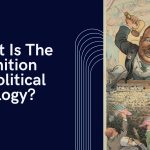Political parties play a pivotal role in shaping the landscape of governance and policymaking in the United States. As the cornerstone of American democracy, these organized groups serve as vehicles for citizens to express their political preferences, advocate for policies, and compete for public office. Understanding the intricacies of political parties is essential for grasping the dynamics of the American political system.
In this article, we delve into the realm of political parties in the United States, exploring their historical evolution, major players, and the broader impact they have on the country’s governance. From the early factions of the nation’s founding to the modern-day two-party dominance, the journey of American political parties is one filled with complexities, conflicts, and constant evolution.
Join us as we navigate through the history, ideologies, and significance of political parties in the United States, shedding light on their role in shaping the nation’s democracy and influencing the course of its history.
History of Political Parties in the United States
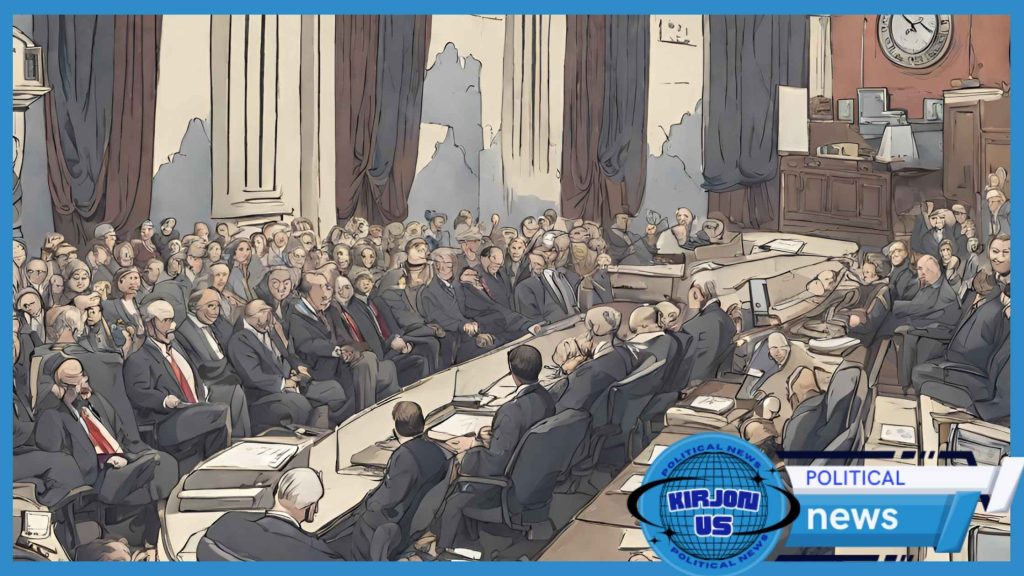
Early Political Factions
The roots of political parties in the United States can be traced back to the very beginnings of the nation. Despite the Founding Fathers’ warnings against the dangers of factionalism, political divisions emerged shortly after the ratification of the Constitution in 1789. The debate over the role of the federal government, the economy, and foreign policy laid the groundwork for the formation of the first political parties.
Evolution of Modern Political Parties
The early years of American politics saw the emergence of two dominant factions: the Federalists and the Democratic-Republicans. Led by Alexander Hamilton, the Federalists advocated for a strong central government and closer ties with Britain, while the Democratic-Republicans, under the leadership of Thomas Jefferson, championed states’ rights and a more agrarian society.
As the nation expanded and underwent significant socio-economic transformations, the political landscape evolved. The Federalist Party gradually faded into obscurity, leaving the Democratic-Republicans as the dominant force in American politics. However, internal divisions within the party eventually led to its fragmentation and the emergence of new political alliances.
By the mid-19th century, the political landscape was dominated by the Democratic Party and the newly formed Republican Party. The Democratic Party, rooted in agrarian interests and support for states’ rights, found its base in the South, while the Republican Party, founded on anti-slavery principles and support for industrialization, gained traction in the North.
The Civil War and its aftermath solidified the dominance of the Republican Party, which became associated with the abolition of slavery and the promotion of civil rights. Meanwhile, the Democratic Party underwent ideological shifts, with conservative and liberal factions vying for control.
Throughout the 20th century, political parties in the United States continued to evolve in response to changing social, economic, and demographic dynamics. The New Deal era saw the Democratic Party embrace progressive policies aimed at addressing the challenges of the Great Depression, while the Republican Party emerged as a bastion of conservatism, advocating for limited government intervention and free-market principles.
Today, the Democratic and Republican Parties remain the two major political forces in the United States, shaping the national discourse and competing for control of government institutions. Despite their dominance, the history of American political parties is characterized by flux and adaptation, reflecting the ever-changing nature of American society and politics.
Major Political Parties
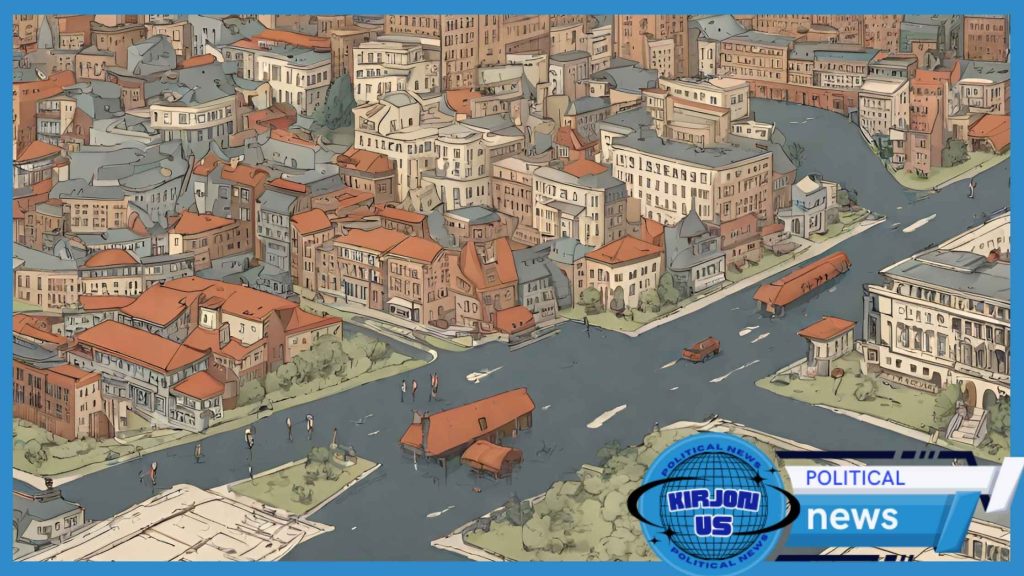
Democratic Party
The Democratic Party, one of the two major political parties in the United States, has a rich history dating back to the early days of the republic. Founded by Thomas Jefferson and James Madison in the 1790s, the party traces its roots to the Democratic-Republican Party and has since undergone significant ideological shifts and transformations.
Origins and History
The Democratic Party emerged as a political force in opposition to the Federalist Party’s vision of a strong central government. Early Democratic leaders such as Andrew Jackson and Martin Van Buren championed the cause of states’ rights, agrarian interests, and the expansion of democracy.
Over the years, the Democratic Party evolved into a coalition of diverse interests, including labor unions, minority groups, environmentalists, and social progressives. It played a central role in advancing civil rights legislation during the 20th century, with key figures such as Franklin D. Roosevelt and Lyndon B. Johnson spearheading efforts to combat racial segregation and discrimination.
Ideology and Platform
The Democratic Party’s ideology is characterized by a commitment to social justice, economic equality, and government intervention to address societal challenges. It advocates for policies such as universal healthcare, environmental protection, LGBTQ+ rights, and progressive taxation.
The party’s platform often includes initiatives to expand access to education, promote diversity and inclusion, and strengthen social safety nets. Democratic leaders prioritize issues such as climate change, income inequality, and healthcare reform, positioning the party as a champion of progressive values and social welfare programs.
Republican Party
The Republican Party, the other major political party in the United States, has its origins in the anti-slavery movement of the mid-19th century. Formed in 1854 by anti-slavery activists, the party quickly rose to prominence and became a major force in American politics.
Origins and History
The Republican Party was founded as a coalition of former Whigs, abolitionists, and free-soilers who opposed the spread of slavery into new territories. Abraham Lincoln, the party’s first president, led the nation through the Civil War and played a pivotal role in ending slavery with the Emancipation Proclamation.
Following the Civil War, the Republican Party emerged as the dominant political force in the North, advocating for Reconstruction policies to rebuild the South and protect the rights of newly emancipated slaves. However, internal divisions and external pressures led to a gradual shift in the party’s priorities.
Ideology and Platform
The Republican Party’s ideology is rooted in principles of limited government, free-market capitalism, and individual liberty. It advocates for policies such as tax cuts, deregulation, and fiscal conservatism, arguing that government intervention stifles economic growth and individual initiative.
The party’s platform often includes initiatives to strengthen national security, promote traditional values, and protect Second Amendment rights. Republican leaders prioritize issues such as border security, defense spending, and judicial appointments, positioning the party as a defender of conservative values and American exceptionalism.
Despite ideological differences, both the Democratic and Republican Parties play crucial roles in shaping the direction of American politics and governance. As the two major political forces in the United States, they compete for control of Congress, the presidency, and state governments, influencing policy outcomes and shaping the national discourse on key issues.
Third Parties
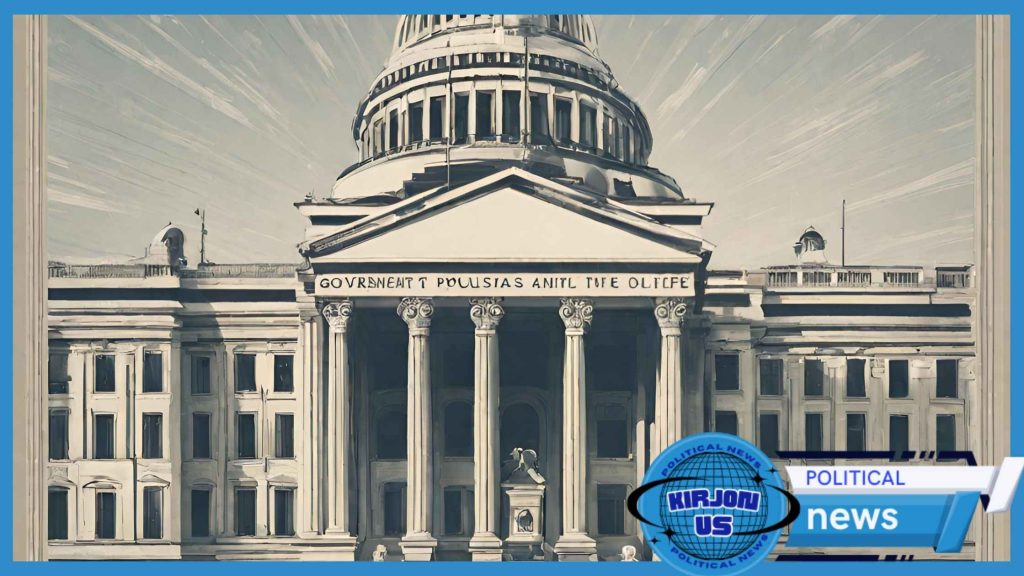
Definition and Significance
In addition to the two major political parties, the United States has a history of third parties that provide alternative platforms and perspectives in the political arena. Third parties, also known as minor parties or independent parties, offer voters options beyond the Democratic and Republican candidates, challenging the dominance of the two-party system.
Third parties play a crucial role in American politics by introducing new ideas, advocating for marginalized issues, and holding the major parties accountable. While they often struggle to compete with the financial and institutional resources of the major parties, third parties contribute to political diversity and promote democratic principles.
Examples of Notable Third Parties in the US
Throughout American history, several third parties have emerged to challenge the dominance of the Democratic and Republican Parties. While many of these parties have had limited success in winning elections, they have nevertheless left their mark on the political landscape.
The Libertarian Party
Founded in 1971, the Libertarian Party advocates for limited government, individual freedom, and free-market economics. Libertarians promote policies such as drug legalization, non-interventionist foreign policy, and the protection of civil liberties. While the party has yet to achieve widespread electoral success, it has garnered attention for its principled stance on issues of personal freedom and individual rights.
The Green Party
Established in 1984, the Green Party focuses on environmentalism, social justice, and grassroots democracy. Greens advocate for policies such as renewable energy, universal healthcare, and campaign finance reform. While the party has enjoyed some electoral success at the local and state levels, it faces challenges in gaining widespread support and visibility in national elections.
The Constitution Party
Formed in 1991, the Constitution Party promotes conservative Christian values, limited government, and strict adherence to the Constitution. Constitution Party candidates advocate for policies such as restricting immigration, abolishing the Federal Reserve, and withdrawing from international organizations. While the party has a small but dedicated following, it has struggled to gain traction in mainstream politics.
While third parties face numerous obstacles in the American political system, including restrictive ballot access laws and limited media coverage, they remain an important part of the democratic process. By offering alternative visions and challenging the status quo, third parties contribute to the vibrancy and diversity of American democracy.
Minor Political Parties
Overview of Minor Parties
In addition to third parties, the United States also boasts a variety of minor political parties that operate on both local and national levels. These parties often represent niche interests or specific ideological viewpoints, providing voters with additional choices beyond the major parties.
Minor parties may focus on single issues, such as environmental conservation or tax reform, or they may offer comprehensive platforms that differ from those of the major parties. While they typically have limited electoral success, minor parties can still influence the political landscape by raising awareness of particular issues and shaping public discourse.
Their Role in the Political Landscape
Minor parties play a valuable role in American politics by serving as vehicles for grassroots activism and ideological diversity. They offer a platform for individuals and communities to express their views and advocate for change, even if they do not have the resources or infrastructure to compete with the major parties.
Minor parties can also act as catalysts for political reform by challenging the status quo and pushing the major parties to address neglected issues or adopt new policies. While they may not win many elections, minor parties can still exert influence by mobilizing voters, shaping public opinion, and promoting alternative approaches to governance.
Despite their marginalization in the political system, minor parties continue to play an important role in American democracy, serving as a reminder that political change can come from outside the established power structures. By providing a platform for dissenting voices and marginalized communities, minor parties contribute to the richness and diversity of the American political landscape.
Independent Candidates
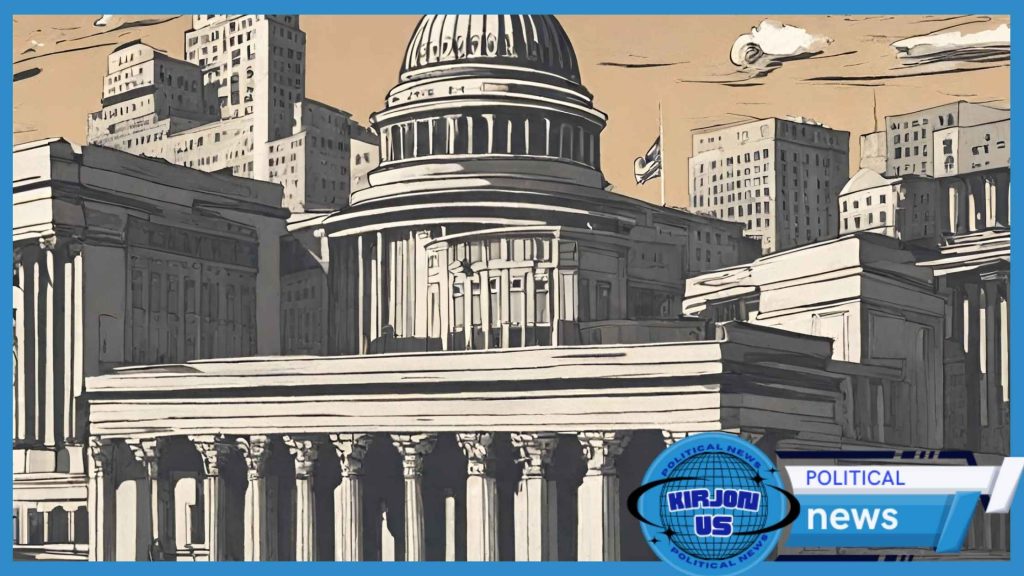
Explanation of Independent Candidacy
Independent candidates, unlike those affiliated with political parties, run for public office without the backing of a specific party. These candidates may choose to distance themselves from partisan politics or may be unable to secure a nomination from any of the major or minor parties.
Running as an independent candidate allows individuals to campaign on their own terms, free from the constraints and expectations of party affiliation. Independent candidates often position themselves as non-conformists who are not beholden to party ideologies or special interests, appealing to voters who are disillusioned with traditional party politics.
Impact on Elections
Independent candidates can have a significant impact on elections, particularly in races where the major parties are closely matched or where there is widespread dissatisfaction with the party establishment. By offering an alternative to the major party candidates, independents can attract voters who are looking for a fresh perspective or who feel disenfranchised by the existing political system.
While independent candidates face numerous challenges, including limited access to campaign funding and media coverage, they can still influence the outcome of an election by siphoning votes away from the major party candidates or by raising awareness of specific issues. In some cases, independent candidates have even won elected office at the local, state, or federal level, demonstrating the potential for outsider candidates to break through the political establishment.
Despite their relatively low success rate, independent candidates play an important role in American politics by challenging the dominance of the two-party system and promoting alternative visions for governance. Whether they win elections or not, independent candidates serve as a reminder that democracy is about choice and that the power to effect change ultimately lies with the voters.
Election System and Political Parties
How the Electoral System Affects Political Parties
The electoral system in the United States, characterized by a combination of single-member districts and plurality voting, has a significant impact on the behavior and strategies of political parties. In a winner-takes-all system, where the candidate with the most votes wins the election, parties tend to focus their efforts on competitive districts where they have a realistic chance of winning.
Influence of Political Parties on Elections
Political parties play a central role in the electoral process, mobilizing voters, recruiting candidates, and shaping the campaign narrative. Parties use various tactics, such as fundraising, advertising, and grassroots organizing, to promote their candidates and persuade voters to support their agenda.
Parties also play a crucial role in voter mobilization and turnout, especially among their core constituencies. By rallying support around a common platform and set of values, parties can energize their base and increase voter participation in elections.
Additionally, parties provide a sense of cohesion and accountability within the political system, helping to organize and coordinate the actions of elected officials and policymakers. Party discipline ensures that legislators adhere to the party’s agenda and priorities, even in the face of competing interests or pressure from special interest groups.
Overall, the relationship between the electoral system and political parties is symbiotic, with each influencing and shaping the behavior of the other. While the electoral system provides the framework for how elections are conducted, political parties play a critical role in mobilizing voters, recruiting candidates, and shaping the outcome of elections.
Party Affiliation and Voter Demographics
Analysis of Party Affiliation Trends
Party affiliation in the United States is influenced by a variety of factors, including demographics, socio-economic status, and regional differences. Over time, there have been shifts in party affiliation as well as fluctuations in the size and composition of the Democratic and Republican voter bases.
Demographic Breakdown of Party Supporters
Party affiliation is often correlated with demographic characteristics such as age, race, gender, and education level. While both parties have diverse support bases, certain demographic groups are more likely to identify with one party over the other.
Age
Younger voters tend to lean Democratic, while older voters are more likely to identify as Republican. This trend is partly attributed to differences in attitudes towards social issues, economic policies, and generational experiences.
Race and Ethnicity
African Americans, Hispanic Americans, and Asian Americans are more likely to identify as Democrats, reflecting the Democratic Party’s support for civil rights, immigration reform, and social justice initiatives. Non-Hispanic white voters are more evenly split between the two parties, with a majority identifying as Republican in many regions.
Gender
Women are more likely to identify as Democrats, while men are more evenly divided between the two parties. This gender gap in party affiliation is influenced by differences in policy preferences, with women expressing greater support for issues such as healthcare, reproductive rights, and education.
Education Level
College-educated voters are more likely to identify as Democrats, while those with lower levels of education are more likely to lean Republican. This divide is attributed to differences in economic priorities, cultural values, and perceptions of government intervention.
Trends in Party Affiliation
Party affiliation in the United States has undergone significant changes over the years, with both the Democratic and Republican Parties experiencing shifts in support and membership. Factors such as political polarization, demographic changes, and evolving issue priorities have contributed to these trends.
Political Polarization
In recent years, political polarization has intensified, with voters becoming increasingly entrenched in their party loyalties and ideological beliefs. This polarization has led to greater party unity and cohesion, as well as heightened partisanship in elections and governance.
Demographic Changes
Changes in the demographic composition of the United States, including population growth among minority groups and the aging of the Baby Boomer generation, have influenced party affiliation patterns. As the country becomes more diverse, political parties must adapt their messaging and outreach efforts to appeal to a broader range of voters.
Issue Priorities
Shifts in public opinion and evolving societal norms have reshaped the political landscape, with new issues emerging as key determinants of party affiliation. Issues such as healthcare, climate change, and income inequality have gained prominence in recent years, leading to realignment within the Democratic and Republican Parties.
Overall, party affiliation in the United States is a complex and dynamic phenomenon influenced by a variety of factors. While demographic characteristics play a significant role in shaping party preferences, other factors such as political ideology, issue priorities, and regional differences also contribute to the diversity of the American electorate.
Challenges Faced by Political Parties
Internal Conflicts
Political parties often grapple with internal conflicts and divisions that can undermine their cohesion and effectiveness. These conflicts may arise from ideological differences, personal ambitions, or strategic disagreements within the party leadership.
External Pressures and Criticisms
Political parties face external pressures and criticisms from various stakeholders, including the media, interest groups, and the general public. Parties are often scrutinized for their policies, tactics, and handling of political issues, leading to public backlash and erosion of public trust.
Factionalism and Fragmentation
The rise of factionalism and fragmentation within political parties poses a significant challenge to their unity and coherence. As parties become more ideologically polarized, different factions vie for control and influence, leading to internal power struggles and ideological purity tests.
Changing Demographics and Voter Preferences
Demographic changes and shifting voter preferences present challenges for political parties as they seek to adapt to evolving societal dynamics. Parties must navigate changing demographics, such as the increasing diversity of the electorate, and respond to emerging issues that resonate with voters.
Technology and Social Media
Advancements in technology and the rise of social media have transformed the political landscape, presenting both opportunities and challenges for political parties. Parties must adapt to new communication platforms and digital campaigning techniques while also grappling with the spread of misinformation and the polarization of online discourse.
Electoral Rules and Regulations
Election laws and regulations can pose challenges for political parties, particularly smaller or emerging parties that may face barriers to ballot access and fundraising. Parties must navigate complex electoral rules and regulations while also adhering to campaign finance laws and disclosure requirements.
Political parties in the United States face a myriad of challenges, both internal and external, as they seek to navigate the complexities of the modern political landscape. From internal conflicts and factionalism to changing demographics and technological advancements, parties must adapt and evolve in order to remain relevant and effective in a rapidly changing world. Despite these challenges, political parties play a vital role in American democracy, serving as vehicles for political participation, representation, and governance.
Conclusion
In conclusion, political parties are fundamental to the functioning of the United States’ democratic system. From the early days of the republic to the present, parties have played a central role in shaping the nation’s politics, governance, and policies. The history of political parties in the United States is marked by evolution, conflict, and adaptation, reflecting the diverse interests and perspectives of the American electorate.
Today, the Democratic and Republican Parties dominate the political landscape, competing for control of government institutions and shaping the national discourse on key issues. However, third parties and independent candidates also contribute to the richness and diversity of American democracy, offering alternative perspectives and challenging the status quo.
Despite facing numerous challenges, including internal conflicts, external pressures, and changing demographics, political parties continue to play a vital role in American democracy. By mobilizing voters, recruiting candidates, and shaping public policy, parties serve as essential vehicles for political participation, representation, and governance.
As the United States confronts complex challenges and uncertainties in the 21st century, the role of political parties will remain crucial in shaping the nation’s future. By embracing innovation, fostering inclusivity, and promoting dialogue and cooperation, parties can continue to fulfill their essential role in advancing the principles of democracy and serving the interests of the American people.
FAQs (Frequently Asked Questions)
- What are the main differences between the Democratic and Republican Parties? The Democratic Party generally advocates for progressive policies such as healthcare reform, environmental protection, and social justice initiatives, while the Republican Party tends to prioritize conservative principles such as limited government, free-market economics, and traditional values.
- Are there any successful third-party candidates in US history? While third-party candidates have had limited success in winning national elections, some notable examples include Theodore Roosevelt’s Bull Moose Party in 1912 and Ross Perot’s independent candidacy in 1992, both of which garnered significant support but ultimately fell short of victory.
- How does the two-party system affect political discourse? The two-party system can sometimes limit the range of political debate and options available to voters, as smaller parties and independent candidates may struggle to gain traction in a system dominated by the two major parties. However, it also encourages strategic voting and coalition-building, leading to a degree of stability and predictability in the political process.
- Can independent candidates make a significant impact in US elections? While independent candidates face numerous challenges, including limited access to resources and media coverage, they can still influence elections by attracting disaffected voters, raising awareness of specific issues, and challenging the dominance of the major parties.
- What role do political parties play in shaping public policy? Political parties play a crucial role in shaping public policy by mobilizing support for their agendas, recruiting candidates who align with their priorities, and influencing legislative outcomes through party discipline and coordination. Parties serve as essential intermediaries between the government and the electorate, translating public preferences into actionable policy proposals and initiatives.






